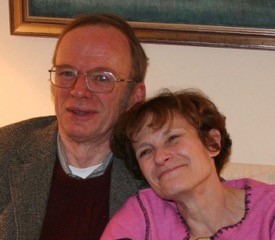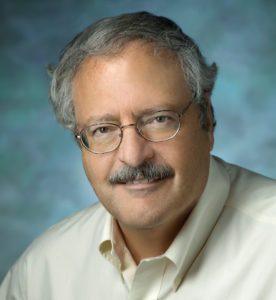 PAUL ENGLUND received his PhD from Rockefeller University in 1966. Following post-doctoral training at Stanford University in the Department of Biochemistry, he joined the faculty in the Department of Biological Chemistry at Johns Hopkins University in 1968. In 2010 he retired and is now a Professor Emeritus. At Stanford, he worked on DNA enzymology, studies that he continued for a few years at Hopkins. Searching for a new project in the early 1970’s, he began to work on protozoan parasites that cause tropical diseases. His work eventually centered on Trypanosoma brucei that cause human and cattle diseases in sub-Saharan Africa. He studied mainly the mitochondrial DNA called kinetoplast DNA (kDNA) that is isolated in the form of giant networks of interlocking DNA rings (minicircles and maxicircles). There was nothing known about their replication when he started, and over the years he worked out many features of the kDNA replication pathway. Around 1980, he began a collaboration with Jerry Hart to study the biosynthesis of GPI anchors, which are more abundant in trypanosomes than any other cell type, thus making this organism an ideal model system in which to study this process. They discovered the GPI precursor and worked out the pathway for the biosynthesis of this precursor. They also discovered the remodeling pathway by which the original longer fatty acids are replaced by myristate. The Englund lab subsequently discovered the unique mechanism by which trypanosomes synthesize fatty acids. All of this research was done by graduate students and post-doctoral fellows in the Englund lab. In addition, Paul was Co-Director of the Biology of Parasitism course at the Marine Biological Laboratory in Woods Hole, Massachusetts from 1984–1988. In 2010, he was elected to the National Academy of Sciences.
PAUL ENGLUND received his PhD from Rockefeller University in 1966. Following post-doctoral training at Stanford University in the Department of Biochemistry, he joined the faculty in the Department of Biological Chemistry at Johns Hopkins University in 1968. In 2010 he retired and is now a Professor Emeritus. At Stanford, he worked on DNA enzymology, studies that he continued for a few years at Hopkins. Searching for a new project in the early 1970’s, he began to work on protozoan parasites that cause tropical diseases. His work eventually centered on Trypanosoma brucei that cause human and cattle diseases in sub-Saharan Africa. He studied mainly the mitochondrial DNA called kinetoplast DNA (kDNA) that is isolated in the form of giant networks of interlocking DNA rings (minicircles and maxicircles). There was nothing known about their replication when he started, and over the years he worked out many features of the kDNA replication pathway. Around 1980, he began a collaboration with Jerry Hart to study the biosynthesis of GPI anchors, which are more abundant in trypanosomes than any other cell type, thus making this organism an ideal model system in which to study this process. They discovered the GPI precursor and worked out the pathway for the biosynthesis of this precursor. They also discovered the remodeling pathway by which the original longer fatty acids are replaced by myristate. The Englund lab subsequently discovered the unique mechanism by which trypanosomes synthesize fatty acids. All of this research was done by graduate students and post-doctoral fellows in the Englund lab. In addition, Paul was Co-Director of the Biology of Parasitism course at the Marine Biological Laboratory in Woods Hole, Massachusetts from 1984–1988. In 2010, he was elected to the National Academy of Sciences.
CHRISTINE SCHNEYER ENGLUND, MD, devoted her medical career to patient care, teaching, and clinical research. Previously she was the Associate Director of Endocrinology at Sinai Hospital of Baltimore and Director of the Osteoporosis Center at Mercy Hospital. In 2007, she earned a Master’s degree in Clinical Investigation at the Johns Hopkins School of Public Health. She has been an adjunct faculty member in the Division of Endocrinology at Johns Hopkins since 1990, and continues to teach Hopkins medical residents during their specialty rotations in Endocrinology. In the near future, she plans to begin volunteer work as an Endocrine Consultant at the Shepherd Clinic in Baltimore. Medicine was a second career for Christy. She attended the University of Maryland School of Medicine after obtaining a Master’s degree in Piano.
